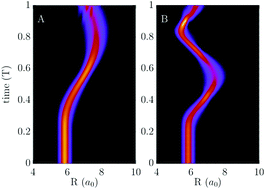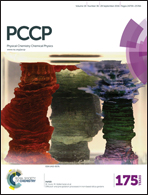Nonresonant electronic transitions induced by vibrational motion in light-induced potentials
Abstract
We find a new mechanism of electronic population inversion using strong femtosecond pulses, where the transfer is mediated by vibrational motion on a light-induced potential. The process can be achieved with a single pulse tuning its frequency to the red of the Franck–Condon window. We show the determinant role that the gradient of the transition dipole moment can play on the dynamics, and extend the method to multiphoton processes with odd number of pulses. As an example, we show how the scheme can be applied to population inversion in Na2.


 Please wait while we load your content...
Please wait while we load your content...